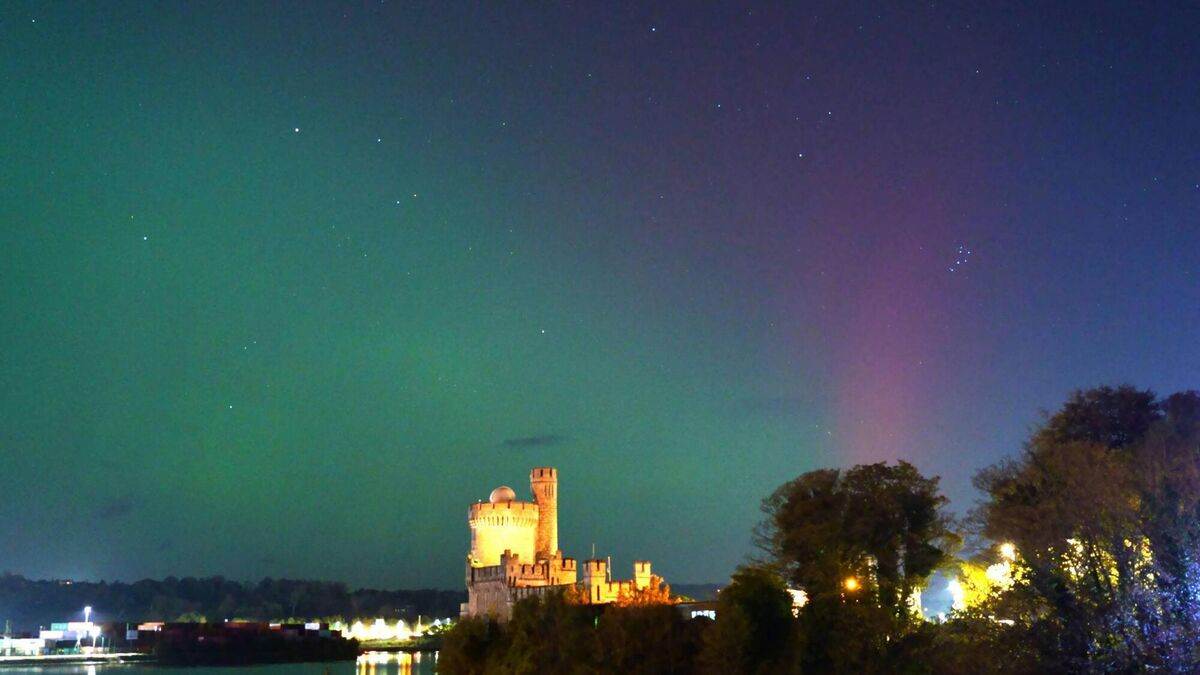NASA Space Technology
It was 10.30pm, I was in bed and my phone beeped. An incoming text message: “Go look at the night sky, the lights are visible, don’t forget to make a wish”.
I went outside but couldn’t see anything. From photos of the Northern Lights, I had naively expected to be blinded by the sky pulsing with colour.
It’s a far more subtle affair than I’d imagined, all I could see was a grey patch. That changed when I took a photo. Then, I saw magic. I wasn’t alone. Thousands of people in Ireland enjoyed the awe-inspiring Northern Lights on October 10.
Unlike me, most night-sky enthusiasts were aware of the increased chance of witnessing the Northern Lights.
The National Oceanic and Atmospheric Administration had predicted a “major aurora” and stargazers were mesmerised by the spectacular display that followed. Perfect weather conditions aligned with strong aurora activity, making the atmospheric phenomenon visible all over Ireland.
Astronomer and editor of Astronomy Ireland magazine David Moore told me he has seen nine auroras this year.
The trick? Having a camera to hand. Cameras collect light for several seconds but our eyes see the show in real time, explaining why the enchanting green and red sky had appeared to my naked eye like nothing more than a grey smudge.
I never expected to see the aurora from my garden. I assumed the mystical phenomenon was a luxury for those living in, or visiting, one of the northern countries.
Alaska, Canada, Finland, Iceland, Norway, and Sweden all seduce tourists by boasting regular showings. But the lights are not as rare in Ireland as we may think.
With favourable weather conditions, they’re visible on average twice a week in north Scotland and even once a week in Donegal.

A big explosion
To catch the display, there is an element of luck. A strong prediction can lead to nothing because there are so many variables at play.
Niall Smith, head of research at Munster Technological University, told how: “Northern Lights happen when the sun has a big explosion. The sun goes through an 11-year cycle. We’re currently approaching the peak.”
So keep the cameras ready to go as there is an increased chance of witnessing one of nature’s greatest wonders in the coming months.
According to Mr Moore, an equinox, such as that on September 21, opens up a magnetic route, making it even more likely we’ll see more auroras.
Unlike the falling star which catches us completely off guard, aurora activity can be predicted to a degree.
While we cannot say definitively if the lights will appear in a month, the sun is monitored closely and constantly guarantees us at least 12-14 hours’ notice.
Astronomy Ireland runs the biggest aurora alert service in Ireland and predicts whether there will be an aurora on their social media every day before sunset.
Despite Ireland’s southern location, we have been treated to the mystical displays more frequently of late. This is because we are at the peak of a sun cycle that began in 2019.
The aurora in May was the biggest in 500 years, according to Nasa. Jan Svamberg, researcher and creator of the aurora mobile app Lumyros and the Ultimate Northern Lights online course for beginners, is determined to make auroras accessible to all. He created his app in 2022.
He said: “I was working in a hotel in Iceland and met an elderly couple hunting the lights. They explained it was a holiday they had spent years saving for and they had not managed to see the lights.
“On their final night, aurora activity was low and the sky was filled with clouds so they didn’t get to see the lights before going home. The kicker was, the night before they left, there had been a stunning display in the location they were staying in but it took place at 2.30am and they slept through it.”
He is now devoted to making the complex information surrounding the Northern Lights accessible to everyone. His course focuses on translating information that is often written in an obscure manner into layman’s terms. “An aurora is something everyone deserves to see”.

Mysterious science
The Northern Lights fascinate most of us, perhaps because of the mysterious science behind them. We still have unanswered questions.
People have described an array of different responses to seeing the Northern Lights.
For some, they inspire a feeling of tranquillity, a sense of hope, almost a spiritual experience. Others describe it as humbling, they find it sobers the mind and provides perspective.
Poet Robert Service wrote: “The arctic trails have their secret tales.” They are elusive, mysterious, and shrouded in mythology.
Before people understood why the lights appear, many theories evolved. In Finland they were named “Revontulet”. People believed that magical fire foxes were roaming through the mountains, creating the colours by sweeping the snow with their tails.
The myth in Iceland was that women who gave birth during an aurora would be relieved of pain. However, if the mother looked at the display, the child would be born cross-eyed.
In Ireland they were referred to as “streamers”, an indication that poor weather was on the way.
They are deeply embedded in Irish folklore and Celtic mythology, believed to be a connection with the “other world”.
When an aurora was visible, people believed it was the gods sending a warning. This dates back to the 12th century in Ireland. Perhaps we respond with such emotion because we associate the lights with a connection to our ancestors?
We now know nature’s light show is the result of particles from the sun colliding with atoms from the earth but the scientific explanation has not removed the allure or charm.
An aurora borealis is an amazing spectacle of nature delivered right to our doorstep. Its beauty is unparalleled.

Getting it for the ‘gram
Although the sight of an aurora will stay etched in your memory, capturing an Instagrammable picture as a souvenir is a must for many.
The great news is that, while a professional camera is best, it is possible to get a great shot of that ethereal green glow using your smartphone.
If you’re committed to capturing the perfect shot, it’s recommended that you invest in a tripod with a remote. This ensures your phone will remain still, which is half the battle.
If using an iPhone camera, you must select night mode and then maximise exposure time (10-second shutter speed).
If using an Android, select night setting and you should be good to go.
If night mode is not a feature, there may be a pro mode you can select.
After doing so, change the iso setting to as high as possible (800) and change shutter speed to 10 seconds.
As the generation who are aware of the magical events occurring in our skies at present, we are the gatekeepers of science. Let it be a gift to the next generation.
We currently have a very active sun, which means there will be lots more activity in the coming months.
A quick glance at the appropriate websites or Facebook pages will provide you with all the information as to what, where and why.

Telling aliens about space
Astronomy is an easy way to entertain your child. You don’t need an encyclopaedic knowledge.
Mr Moore recalls his days on The Den talking astronomy with Zig and Zag in the 1990s.
Encouraging children to take an interest in space is still a pursuit of his.
He does “school talks” nationwide. He said: “If you put a coloured picture in front of a child and tell them an interesting story, they’ll take notice. This develops an interest in space and that’s a direct route to science. If you’ve a degree in science, you’ve a job for life.”
As I’ve been writing this article, a super moon is shining brightly in the sky, a comet is also visible — only with a camera, not to the naked eye.
We live in such a fast-paced world, there’s always a sense of urgency, there is always something ‘very important’ to do.
With the beauty that is surrounding us at present, it’s tempting to lean into a fantasy that the natural world is serving as a gentle reminder of just how insignificant these ‘very important’ things are by inspiring the illusion of a paradisiacal land.








